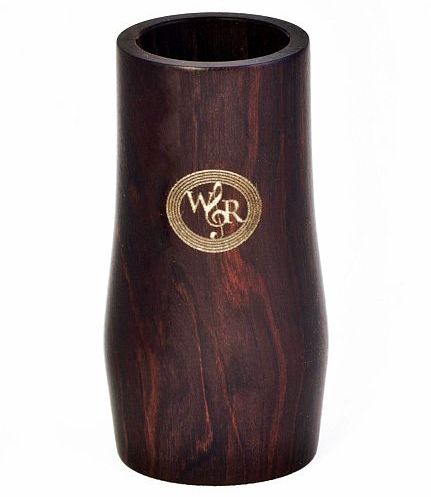Choosing the right clarinet barrel is critical. Besides the mouthpiece, the barrel has the greatest effect on playability of any part of the clarinet. A barrel which plays incredibly well on one instrument may not play well with another. Even though the clarinet barrels I make are practically identical — down to less than half the diameter of a human hair, some will naturally play better than others on certain instruments. Many professionals have a system for choosing mouthpieces, barrels, and bells, and after matching around 100 clarinets and barrels, I have come up with my own system by looking for four distinct characteristics that a barrel should elicit from a clarinet.
First Round:
Start by playing an eighth note returning F scale (Forte volume, quarter note equals 100) over three octaves. This scale is chosen for its easy key signature and large range. Avoid playing anything besides this scale, and as you are playing, quickly decide if the barrel is a good match or not by evaluating its resonance and focus. If the barrel plays well, set it aside for further comparison. If it doesn’t play well, put it away. This process should take less than 20 seconds for each barrel and should move quickly.
Resonance:
For most players, this is the aspect they will look for when choosing a clarinet barrel. As the scale is played listen to how well each octave resonates. The sound should be equally resonant throughout the range. Dictionary.com defines resonance as “the intensification and enriching of a musical tone by supplementary vibration”. Any good barrel will supplement and therefore increase the vibration of the sound of a clarinet. I listen for the addition of overtones and undertones, which elicit a richness of sound without becoming overly strident.
Focus:
When choosing a clarinet barrel, the focus of sound is of equal importance to the resonance. Regardless of the style of playing, an unfocused tone is extremely undesirable. The low and mid-range notes do not usually require much focusing, but as the notes ascend, greater and greater focus is required to produce a well rounded tone. Listen to the quality of focus as you ascend through the scale. The upper notes should sound as well-rounded as the lower notes, and should not shriek or be overly bright. As you descend the scale, make sure the quality of tone remains the same.
Second Round:
Using the clarinet barrels you have chosen as potential matches, conduct the same test as in round one to weed out any more barrels which do not have the resonance and focus you desire. Continue with this round until you have narrowed your selection of clarinet barrels down to two or three.
Third Round:
At this point, there is usually one barrel that stands out in terms of resonance and focus, but tuning and playability also must be considered. You may get lucky and find one that is the best in every category, but if not, it is up to you to consider and weigh the factors that are most important to you as a player.
Tuning:
The tuning of a clarinet is obviously very important, as energy spent correcting bad tuning could otherwise be spent concentrating on other aspects. Most clarinets will have flat low notes and sharp high notes, and a good barrel will correct these things to some degree. In general, the tuning between clarinet barrels of a certain design is almost identical, and so only a brief test for each barrel is required. Again, an F scale is a good way to see tuning trends. The tuning should be much improved, but even if it is the same as with your stock clarinet barrel, you will still be gaining resonance, focus, and playability.
Playability:
Most of the time, the clarinet barrel with the best resonance and focus will give the best playability. However, playing a few brief passages on the final-round barrels will reveal the best match for you and for your clarinet. Choose a slow, lyrical passage, a fast passage, and a passage with difficult articulation. Each passage should be a few lines long and should possess a broad range of notes and dynamics. Sometimes the barrel that was at the top of the list will be more difficult to control, and so a slightly less resonant one will have to be chosen.
Final Considerations:
At this point, you should have the barrel that elicits the best resonance, focus, tuning, and playability from your clarinet. Hopefully you were lucky enough to find a barrel that was the best in every category. Very often, the results are humorous when comparing this aftermarket clarinet barrel to your stock barrel, as the stock barrel will sound awful.


